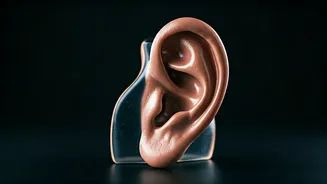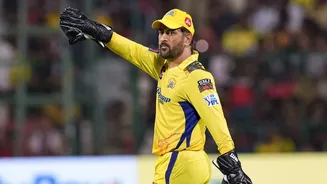Microtia Unveiled
Microtia is a congenital anomaly where the outer ear fails to fully develop or is smaller than usual. It is categorized into four types, each indicating
varying degrees of severity. Type I presents a slightly smaller ear with many typical features, whereas Type II displays a partially developed and deformed ear, frequently with a closed ear canal. Type III, the most prevalent form, is characterized by a tiny, often peanut-shaped remnant of the ear, frequently accompanied by an absent ear canal and eardrum. Type IV, the most severe, involves the complete absence of the external ear, known as anotia. The global incidence of microtia ranges approximately from 1 in every 5,000 to 10,000 live births, a range generally seen in India, with some studies showing rates around 1 in 10,000 births. This information underscores the importance of awareness and early intervention.
Challenges Faced Daily
Individuals with microtia and their families face several physical, emotional, social, and medical challenges. One of the most common issues is hearing loss, particularly when the ear canal is absent (aural atresia). This can significantly impact a person's ability to communicate and interact with the world around them. Furthermore, children with microtia are at an increased risk of being bullied or teased, which can be particularly damaging during the school years when awareness of physical differences becomes more prominent. Microtia can sometimes occur alongside other craniofacial anomalies, such as hemifacial microsomia, which can involve underdeveloped facial bones and muscles on the affected side. These challenges highlight the need for comprehensive support, including hearing aids, speech therapy, and psychological support.
Treatment Strategies Explored
Treatment options for microtia include reconstructive surgery and hearing aids. Reconstructive surgery aims to rebuild the outer ear and typically utilizes rib cartilage or synthetic materials like MEDPOR or SUPOR. Currently, reconstruction using rib cartilage is still considered the gold standard technique. The choice of treatment depends on the severity of the condition and the patient's specific needs. The goal of treatment is to improve both the physical appearance of the ear and the hearing capabilities of the affected individual. Dr. Ashesh Bhumkar, a respected ENT and Otorhinolaryngologist with over three decades of clinical experience, brings a wealth of knowledge to this field. He completed his MBBS in 1985 and MS in ENT in 1991 from BJMC, Pune, and is a registered member of the Maharashtra Medical Council.
Awareness Day's Impact
Microtia Awareness Day, observed every year on November 9, plays a crucial role in raising awareness about this congenital ear condition. It serves to honor those living with microtia and encourages understanding, early diagnosis, and improved access to both reconstructive and hearing care. Awareness campaigns empower patients and their families by providing them with the knowledge necessary to understand diseases, treatments, and preventative measures. This leads to earlier detection, improved health outcomes, and greater confidence in managing their own health journeys. They also work to reduce stigma by initiating open conversations and offer access to critical information, such as healthcare facilities and support groups. These initiatives are essential in fostering a supportive community and improving the quality of life for individuals affected by microtia.

















